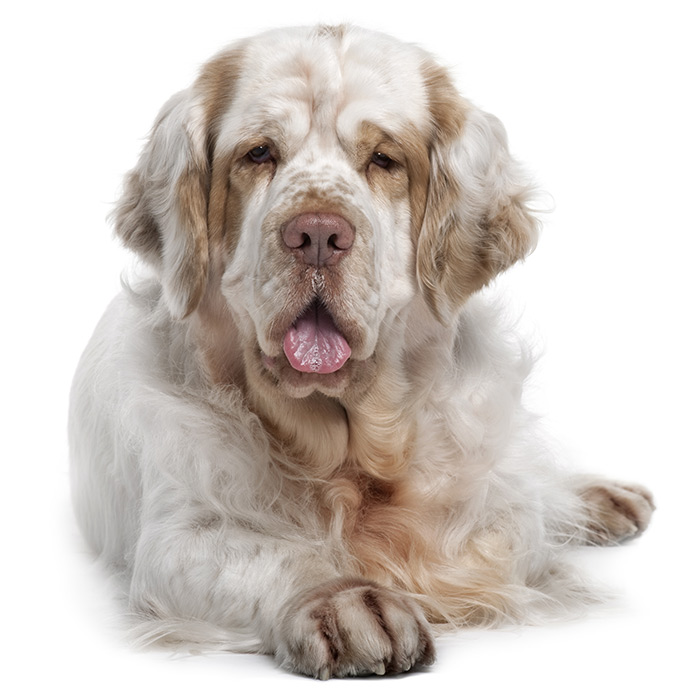Japanese Spitz
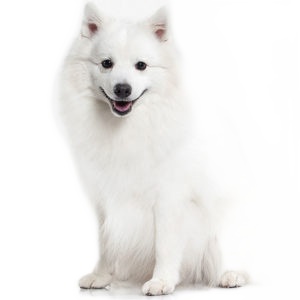

| Recommended for | Families and individuals who can provide companionship and regular exercise |
| Breed Classification | Non-sporting group |
| Other names | J-Spitz, Mini Samoyed |
| Lifespan | 12 to 16 years |
| Size | Small to medium |
| Temperament | Friendly, loyal, affectionate, lively |
| Intelligence | High |
| Tendency to bark | Moderate, typically to alert owners of unusual activity or to seek attention |
| Maintenance Level | Moderate grooming and exercise needs |
| Health Risk | This breed has an around average probability of having health issues in its lifetime, hence it is one of the more affordable breeds to insure. |
Insuring a Japanese Spitz?
Get our award-winning Nose-to-Tail Cover with up to $30k annual benefit limit, up to 90% of eligible vet bills back, and no sub-limits.
Get a quick quote
Is this breed right for you?
Try our breed selector quiz to find out your best matching breed!
Insuring a Japanese Spitz?
Get our award-winning Nose-to-Tail Cover with up to $30k annual benefit limit, up to 90% of eligible vet bills back, and no sub-limits.
Get a quick quote
Breed history of Japanese Spitzs
The Japanese Spitz originated in Japan in the early 20th century as a companion breed, developed to resemble a smaller version of the Samoyed. It was created by crossing various white spitz-type dogs from around the world in order to develop a small, fluffy, intelligent, and adaptable family dog with a loyal and friendly temperament. It shares ancestry with the German Spitz and possibly influences from the American Eskimo Dog and other Northern spitz breeds.
The breed’s development began in the 1920s, when Japanese breeders imported white German Spitz dogs from China, and was first shown in Japan at a dog show in 1921. Throughout the 1930s, additional white spitz breeds from Canada, the United States, Australia, and Siberia were introduced to refine the breed.
After World War II, the breed’s standard was finalized by the Japan Kennel Club (JKC) in 1948, and it quickly gained popularity as a family companion. Over time, the Japanese Spitz was exported to Europe, North America, and Australia, where it was further recognized by various kennel clubs. Because of its similarity to the American Eskimo Dog, the American Kennel Club does not officially recognise the Japanese Spitz as a unique breed, although in 2019 the AKC added the breed to its Foundation Stock Service program for emerging pure breeds.
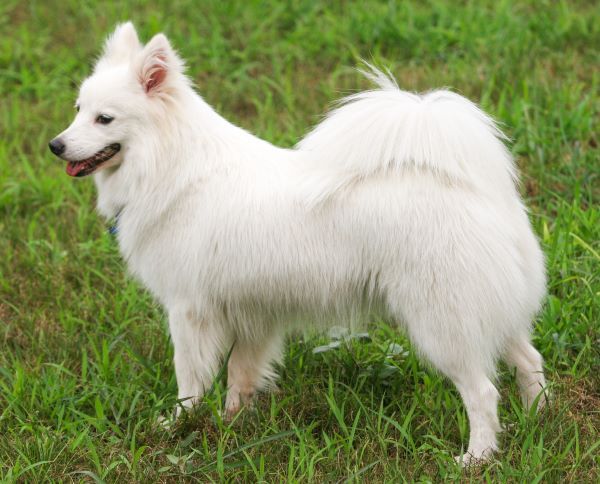
Physical description of Japanese Spitzs
The Japanese Spitz is a small to medium-sized breed with a distinctive, pure white coat that forms a ‘mane’ about their neck. They have an elegant, well-proportioned build, with a deep chest, long legs, and a compact frame. Like other spitz breeds, their tails curl over their back in a beautiful fluffy plume. Their pointed muzzle likens them to a fox, as does their black nose, black eye rims, and triangular, pointed ears, which stand erect and signal their constant alertness. They have dark, expressive eyes and always have a smile on their face.
The Japanese Spitz’s coat is one of its most notable features – thick, pure white, and double-layered, it is soft and plush to the touch. The undercoat is dense and incredibly soft, offering protection against the elements, while coat’s outer layer is straight and a bit longer and rougher. The fluffy tail curls over its back, adding to its distinctive look. The coat’s vibrant white hue adds to the breed’s clean, striking appearance.
| Weight range | 5 to 10 kg |
| Height range | 32 to 38 cm |
| Colours | White only |
| Coat length | Medium; a longer outercoat and a shorter, dense undercoat |
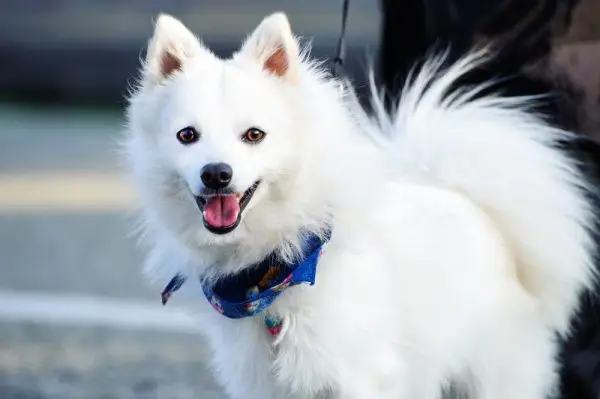
Japanese Spitz personality and temperament
The Japanese Spitz is a friendly, affectionate, and energetic breed with a charming and playful personality. Bred as a companion, they thrive in homes where they can form strong bonds with their families. Their joyful and lively nature makes them an excellent choice for individuals or families looking for a loving and loyal companion. In fact, they are a great dog for a first-time owner; they are relatively low maintenance, have a positive temperament, are incredibly smart, and respond very well to positive reinforcement training.
Social and affectionate, Japanese Spitz dogs love being part of family life and enjoy sharing in daily activities. While they are content to lounge indoors, they also enjoy short outdoor play sessions along with a daily walk. Despite their compact size, they have a surprising amount of energy and require regular physical and mental stimulation. Without proper engagement and stimulation, they may become anxious or display undesirable behaviours.
The Japanese Spitz is adaptable to various living environments, from apartments to suburban homes, as long as their need for regular exercise and companionship is met. They crave attention from trusted humans and love physical contact, and really are the perfect dog for a snuggle!
Because the Japanese Spitz tends to stay on alert, they make for a good watch dog. If their senses are triggered, they will show a lot of bravery and, having a surprisingly loud bark, are capable of warding off strangers. Despite their alert and energetic nature, there is a calmness in the dog when required, and most Japanese Spitzes cope well with being left alone for periods of time.
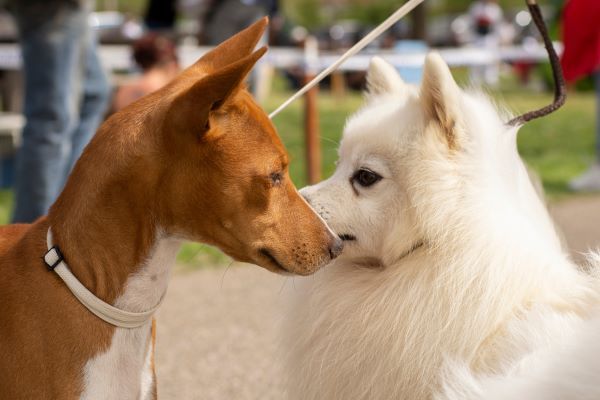
Japanese Spitzs with kids and other pets
The Japanese Spitz is a friendly, playful, and affectionate breed, making them an excellent choice for families with children. They are known for their gentle nature, forming strong bonds with kids, and their sociable personality allows them to interact well in a family environment. Given their playful energy and joyful disposition, they enjoy spending time with children, though supervision is advised during interactions with younger kids to ensure safe play. Their size and sturdy frame make them a great fit for families with children of various ages.
When it comes to other pets, the Japanese Spitz is generally friendly and can coexist well with other dogs, especially those of similar temperament. However, as with many breeds, early socialisation is key to helping them adjust to different animals. They may have a strong prey drive, which could lead them to chase smaller pets like cats or rabbits. With proper introductions and consistent training, Japanese Spitz dogs can live harmoniously with other pets, making them a great addition to multi-pet households.
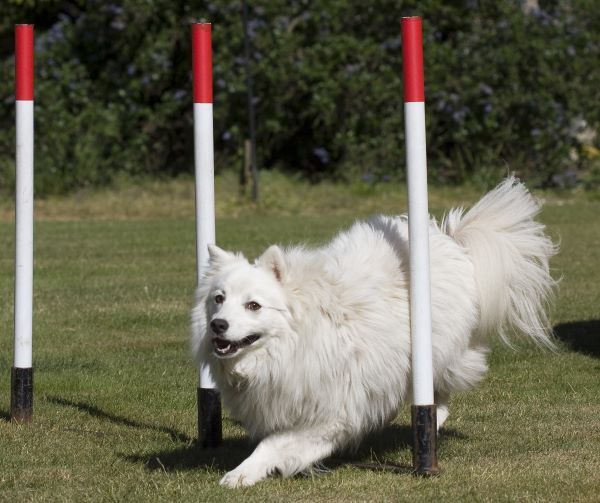
Japanese Spitz training and exercise
As a breed with high energy levels, the Japanese Spitz requires regular physical exercise to remain healthy and happy. A daily walk or run and some play and training time are essential to burn off their abundant energy and will help prevent unwanted behaviours such as excessive barking and shoe chewing. They particularly enjoy activities that allow them to engage in their natural instincts, such as fetch or agility training.
In addition to physical exercise, mental stimulation is crucial for the Japanese Spitz. Their keen intelligence means they thrive on problem-solving tasks like puzzle toys, scent work and obedience training. Providing a variety of activities that challenge both their body and mind will help prevent them from becoming anxious or destructive. With the right balance of exercise, training, and stimulation, the Japanese Spitz will be a well-behaved, happy, and loyal companion for any family.
Highly intelligent and responsive, the Japanese Spitz is a quick learner, making them relatively easy to train. However, they do have an independent streak, so consistency and patience are key during training. They respond well to positive reinforcement techniques such as treats and praise, which helps them stay engaged and motivated. Early socialisation is important to ensure they grow into well-rounded dogs, especially around other pets and new environments. Training sessions should be kept short and fun to maintain their interest, as their playful nature can make them easily distracted if the activity becomes monotonous.
| Energy level | High |
| Exercise requirements | High |
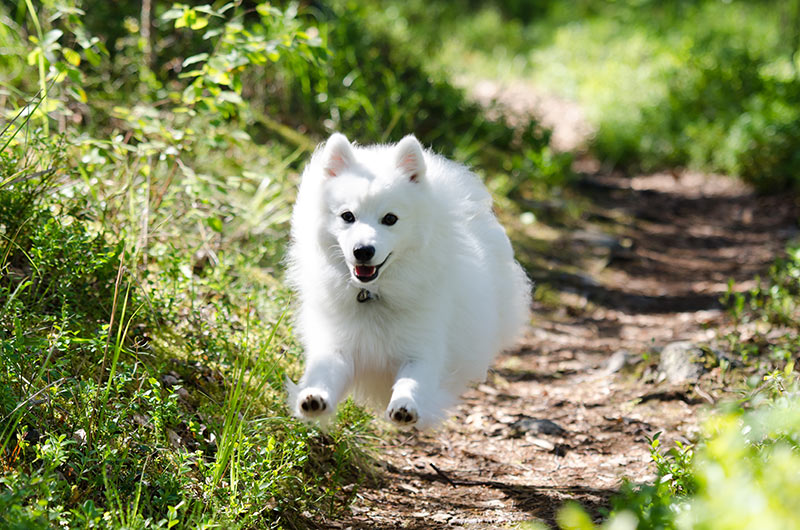
Japanese Spitz feeding and nutrition
The Japanese Spitz requires a well-balanced, high-quality diet to maintain its health, energy, and overall well-being. As a small-to-medium-sized, active breed, they need food rich in protein, vitamins, and minerals to support their energetic lifestyle and beautiful coat. Providing food formulated for active breeds ensures they receive the right balance of nutrients at each life stage. Consulting a veterinarian will help determine the best food options and portion sizes for your dog’s specific needs.
Puppies need a nutrient-dense diet to support their rapid growth and development, while adult Japanese Spitz dogs benefit from balanced meals that provide long-lasting energy without promoting excessive weight gain. Senior dogs may require a diet with fewer calories and added joint support to maintain mobility and manage age-related changes. Adjusting their diet as they grow ensures that they stay healthy and active throughout their life.
Japanese Spitz dogs love food, so portion control is important to prevent obesity; excess weight can put unnecessary strain on their joints and overall health. Avoid overfeeding treats and stick to a measured diet based on age, weight, and activity level.
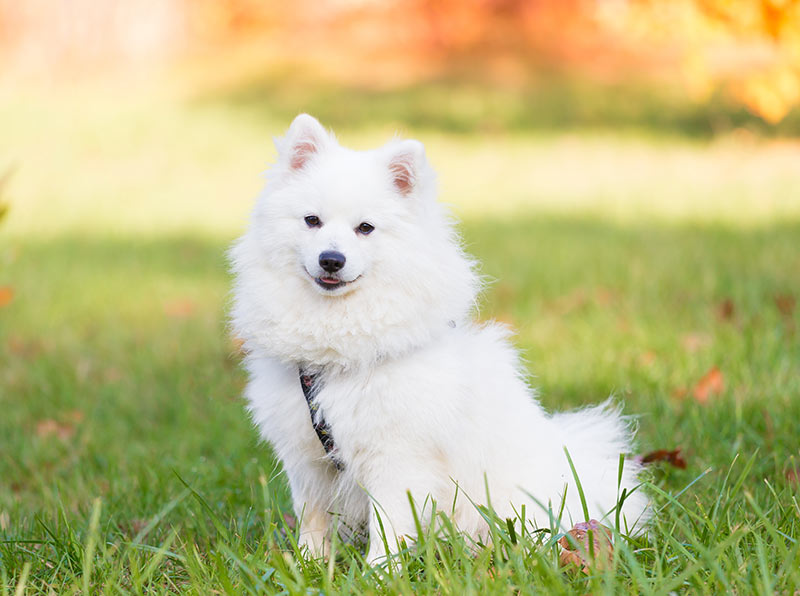
Japanese Spitz care and grooming
The Japanese Spitz requires regular grooming to maintain its stunning appearance and overall health. Their thick, double-layered coat sheds moderately throughout the year, with heavier shedding during seasonal changes. To keep their coat soft and free of tangles, regular brushing is essential. Brushing several times a week will help remove loose hair, prevent matting, and ensure the coat remains healthy. Their fluffy white coat can also attract dirt, so grooming not only enhances their appearance but also helps maintain their hygiene.
Bathing too often can cause them to lose their natural oils and can irritate their skin, so once per season is usually sufficient. Luckily, the Japanese Spitz has a teflon-like coat, so mud and dirt don’t stick to their fur. If they do get muddy, you can simply wait for it to dry and then brush it out. Regular nail trimming is important, as is routine ear cleaning. Dental care should also be incorporated into their routine, with regular brushing to prevent tartar buildup and promote good oral health.
Health issues for Japanese Spitzs
- Patellar luxation occurs when the kneecap dislocates from its normal position, leading to intermittent lameness or difficulty walking. Patellar luxation is common in smaller breeds and may require surgery in severe cases.
- Hip Dysplasia, although not as common in smaller breeds like the Japanese Spitz, hip dysplasia can still occur. This condition involves abnormal development of the hip joint, leading to pain, stiffness, and potential arthritis. Early detection and maintaining a healthy weight are essential to minimizing its impact and ensuring a good quality of life.
- Dental Disease is common in Japanese Spitz dogs, particularly tartar buildup, gum disease, and tooth loss. Regular dental care, including daily brushing and professional cleanings, is essential to prevent these problems and maintain oral health.
- Allergies can occur in Japanese Spitzes, which may be caused by environmental factors, food sensitivities, or contact irritants. Common symptoms include itching, redness, and frequent scratching or licking. A vet can help identify the triggers and recommend treatment options to manage symptoms.
- Leg injuries can occur in Japanese Spitzes, which, despite their sturdy build, are still susceptible to injuries, especially fractures, if not carefully supervised during active play. Providing a safe environment and careful monitoring can help prevent these injuries.
- Runny eyes are quite common in the breed, Minerals, dead skin and other gunk discharge around the eyes over time, which can cause a reddening of the fur on the face and tear stains around the eyes. Causes may include allergies, blocked tear ducts, or eye irritants. Regular eye cleaning and ensuring a balanced diet are important preventatives.
Not all conditions are covered by Pet Insurance. For details of Bow Wow Meow Pet Insurance cover, refer to the Product Disclosure Statement.
What do Japanese Spitz owners claim for the most?
- Cruciate disease
- Patella luxation
- Mass lesion
- Gait abnormality
- Faecal appearance - abnormal
Thinking about insuring a Japanese Spitz
Thinking about insuring a Japanese Spitz
Learn moreThinking about insuring a Japanese Spitz
Learn moreFree engraved pet ID tag on sign up3
Customer Satisfaction
21 day cooling off
Easy to use Pet Portal

GapOnly® in vet claims
MORE INFORMATION
Japanese Spitz Club of NSW: https://japanesespitzclubnsw.weebly.com/
The Japanese Spitz Club: https://www.thejapanesespitzclub.com/



